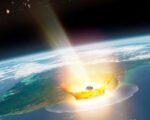Is Defending Earth from Asteroids Possible? Here’s What You Should Know

Efforts to protect Earth from potential asteroid impacts have made notable progress in recent years, but substantial challenges remain in developing effective planetary defense systems. In his book How to Kill an Asteroid, Robin George Andrews explores the complexities of safeguarding the planet from these cosmic threats. One of the primary strategies discussed in the book is deflecting asteroids rather than attempting to destroy them, a concept that was put to the test with NASA’s Double Asteroid Redirection Test (DART) mission in 2022. This mission represented a significant milestone in space defense, successfully altering the orbit of the asteroid moonlet Dimorphos, proving that deflection could be a viable option.
NASA’s DART mission, as highlighted by ScienceNews, demonstrated the feasibility of redirecting an asteroid to prevent a potential collision with Earth. The spacecraft’s impact with Dimorphos on September 26, 2022, was the first successful demonstration of this technique. The impact changed the asteroid’s orbit, a critical achievement for planetary defense, as it validated the concept of using kinetic impactors to redirect an asteroid’s path. While the DART mission proved the method’s potential, experts emphasize that this remains the only proven technique, suggesting that further advancements are necessary to address the full range of asteroid threats.
Despite the success of DART, significant gaps in planetary defense systems remain, particularly in the area of detection. Effective asteroid defense relies heavily on early identification of potential threats, but current detection systems are far from comprehensive. The proposed Near-Earth Object Surveyor (NEO Surveyor), designed to improve asteroid tracking capabilities, has faced delays, partly due to budgetary constraints. The loss of important observational infrastructure, such as the Arecibo Observatory, has further hindered efforts to monitor near-Earth objects. These challenges highlight the critical need for continued investment in detection technologies to enhance our ability to track and potentially deflect hazardous asteroids.
Researchers argue that as the number of known near-Earth objects continues to grow, addressing these gaps in detection and defense systems becomes increasingly urgent. While missions like DART offer hope for the future, they also emphasize the need for a more robust and comprehensive planetary defense infrastructure. With the increasing threat of asteroid impacts, experts stress the importance of global cooperation and significant investment in space defense technologies to protect the planet from potentially catastrophic collisions.
















